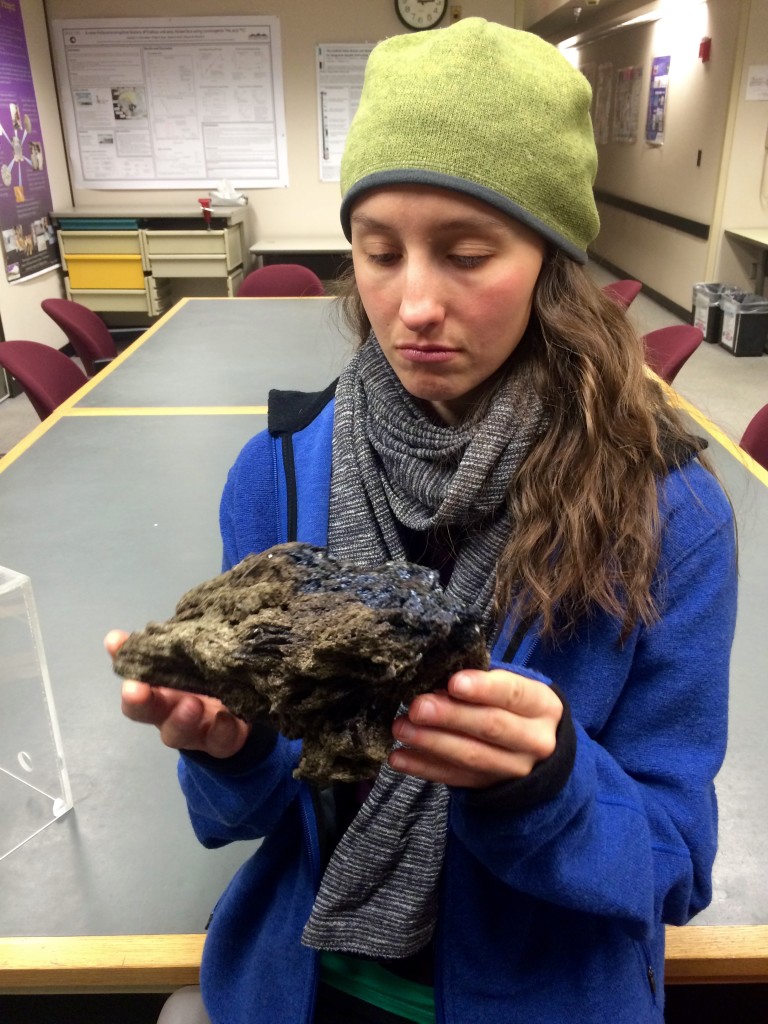The building at McMurdo that houses all the science is called Albert P. Crary Science and Engineering Center. Albert P. Crary was a geophysicist and glaciologist and the first person to stand on both poles…at once! Just kidding.
The building is currently about 4,300 square-feet, but has plans to grow in the next decade.
The lab is now run by a woman named Bev Walker. She gave us our tour.
The entrance to the lab is lined with display cases showcasing some of the classic experiments and findings over the last 60 or so years at McMurdo. There are stuffed penguins and skua gulls. (The skuas and Adelie penguins have the same body size, although the penguins wings are much smaller and thicker than skuas.) The neighboring volcano, Mt. Erebus, often spews out lava bombs. They are collected when found. There are three skulls from Weddell, Ross and Crabeater seals. They each have differently shaped teeth and their skulls are slightly different in size. The crabeater teeth are the coolest. They look like flame silhouettes. (Sidetone: crabeater seals do not eat crabs. There are no crabs this far south. The seals eat fish, just like other seals.)
If you head down the hallway in Crary, you’ll find hundreds of posters detailing the findings of experiments done at McMurdo.
Here are some cool ones:
— Dry Valleys — This area was protected in 1992 as part of the Long-Term Ecological Research (LTER) Project under the National Science Foundation. It has been the site of ongoing aquatic and terrestrial studies ever since.
— Weddell seals — This is an old study from the 1960s, when the Weddell seal population monitoring began. That was the beginning. The study has continued and now we know more about this group of seals than almost any other animal population on earth.
— RAID — The need for Rapid Access Ice Drilling was realized after many years of ice core drilling in Antarctica. Traditional drilling takes years to harvest a single core from the surface to the bed rock. The rapid drilling will help in working through the known cores quickly, then switching drills once the really, really old ice and bed rock is reached.

Love your posts! We were there about a month ago and loved it.
All the ice, the wildlife, everything. Keep those posts coming – lucky!